Every week this summer Francesca Bouaoun has launched her kayak at Ontario Place to check on the trees. They’re a stand of 850 trees planted 54 years ago by landscape architect Michael Hough on the West Island of Ontario Place that has become a mature forest, home to birds, foxes and rabbits, and 12 species endangered or at risk.
A birder and supporter of Ontario Place for All, Bouaoun likes to kayak on Lake Ontario in the evening when the water is calm. As she paddles along the shore, barn swallows (a species of special concern) swoop over the water like fighter pilots, snatching insects. A beaver swims by and a mink stands sentinel on a boulder. She spots a northern pike in the clear water, hovering like a mini-submarine. Spotted sandpipers bob and weave along the shore hunting for insects while a great blue heron stands still, hoping to spear a fish. Bouaoun sighs in relief: the trees were still standing as of August 22. She takes photos to post on her social media accounts to report the good news.
As part of its plan to build a privately owned mega-spa the size of a soccer stadium on the West Island, the Ford government plans to cut down all the trees and dump 10 acres of fill around the shoreline to expand the size of the island. All the wildlife will lose their homes. The huge expanses of glass at the spa, including multistorey glass structures overhanging the lake, will be a hazard for migratory birds unless extraordinary measures are taken to reduce bird strikes.
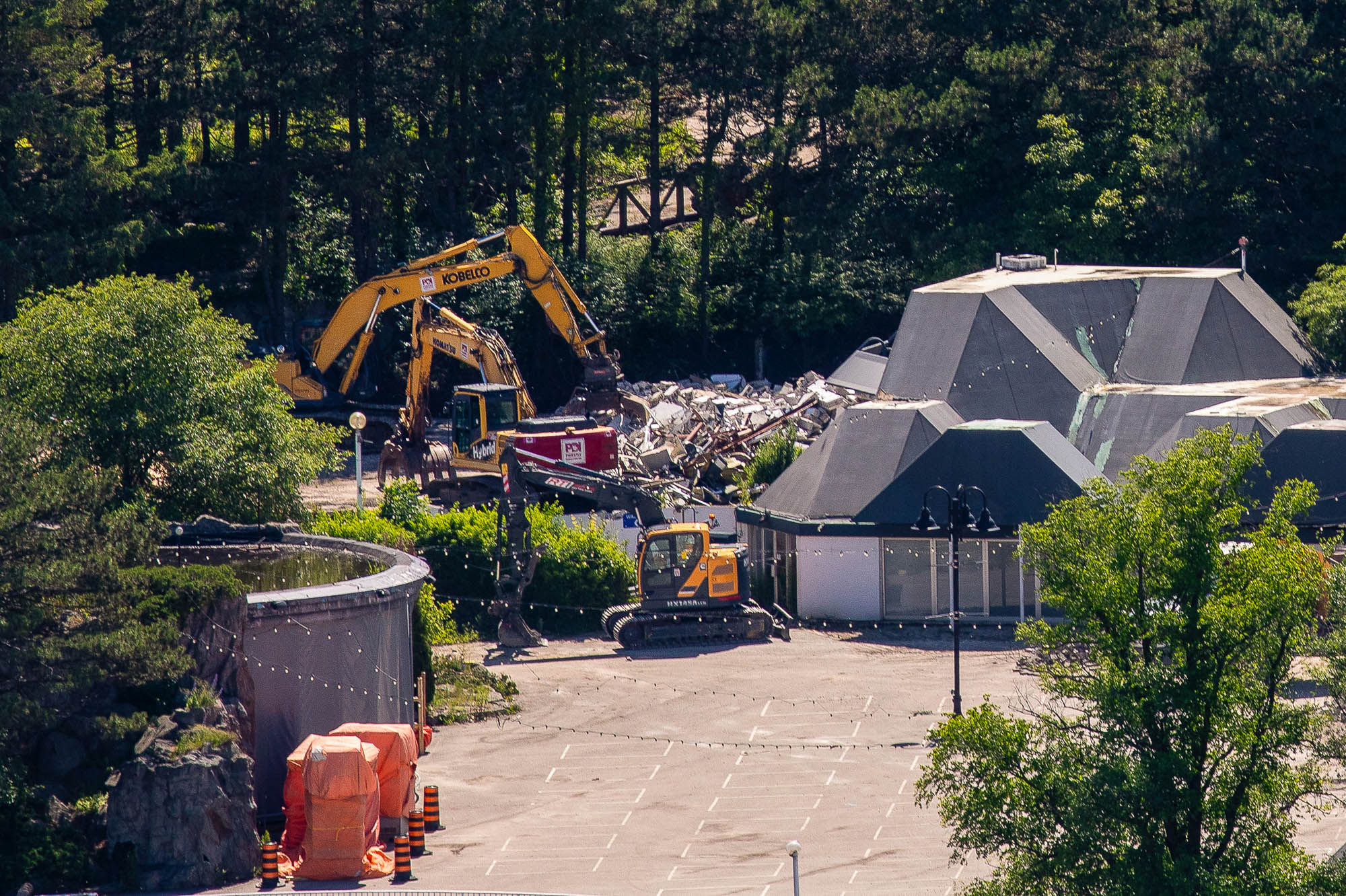
“Ontario Place is being designed using the latest advancements in bird protection. The glass and lighting inside the building are being chosen carefully,” said Simon Bredin, a spokesperson for Therme Group Canada. If the spa is ever built, during spring migration I’ll patrol the base of Therme’s building to check how those “latest advancements” are working. I’ll have plenty of time. The Ford government has granted the Austrian-based company a 95-year lease to the West Island.
Construction has been continuing all summer at Ontario Place despite the Ford government’s alleged “voluntary pause” while lawsuits were before the courts. Huge machines have demolished buildings and trees have been spray-painted for cutting. Crews erected a fence around the entire island, including below the highwater mark on Michael Hough Beach, preventing swimmers from using the cleanest beach in Toronto on the steamiest days of July and August. Many trees bordering the parking lots and around Budweiser Stage, which is being enlarged, have already been cut.
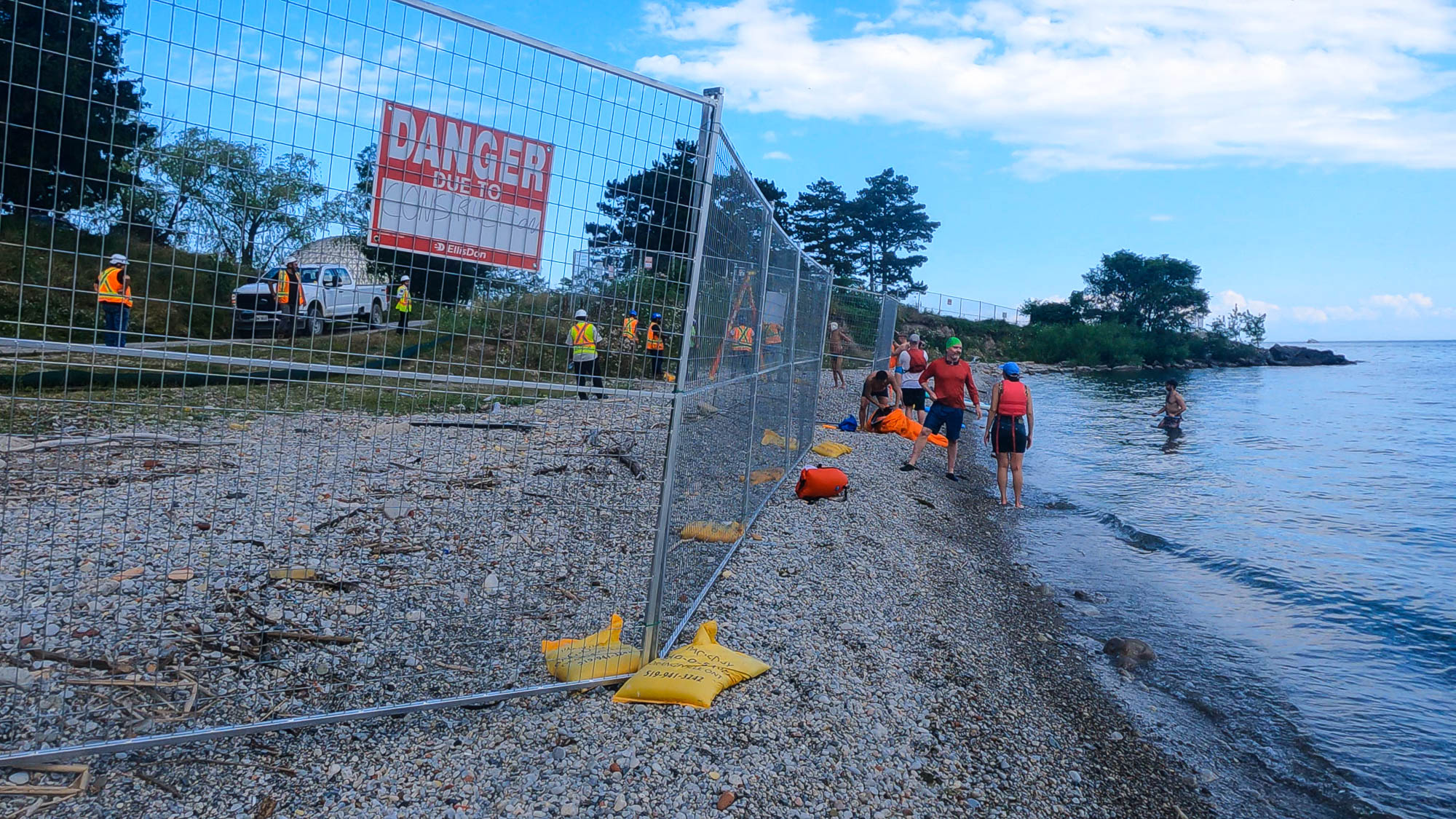
“It’s not just a matter of cutting down 850 trees, they’re obliterating an entire ecosystem,” said landscape architect Walter Kehm, who worked with Michael Hough designing Ontario Place back in the 1960s and 70s and who resigned in protest from LANDinc, a firm contracted to design the public space at the redeveloped Ontario Place.
Although the trees on the West Island are on the chopping block, there remains the possibility of a last-minute reprieve.
The Ontario Court of Appeal has agreed to hear an appeal of a case launched by a coalition of community groups called Ontario Place Protectors to declare the Rebuilding Ontario Place Act unconstitutional and a breach of public trust, thus halting the Ford government’s plans to build a mega-spa on the West Island. As of August 27, 2024 the court had not set a date to hear the appeal.
A spokesperson for the Ontario Ministry of Infrastructure said that, despite the appeal, work on the West Island is proceeding.
The Migratory Bird Convention Act stipulates that tree removal should not be undertaken between April 1 and August 31, suggesting clearcutting of the West Island could start as early September. So all the trees could be felled before the Court of Appeals renders its decision.


Another potential obstacle to the Ford government’s plans is the Haudenosaunee Development Institute (HDI), representing the Haudenosaunee Confederacy Chiefs Council of the Six Nations of the Grand River. The institute is threatening to halt the Ontario Place project because it says the Government of Canada did not adequately consult them.
“We are considering all options, which may include legal actions or supporting those who wish to take legal action to address the blatant illegality surrounding the entirety of the Ontario Place redevelopment process,” said Aaron Detlor, the Haudenosaunee Development Institute’s lawyer.
“The rights being infringed are the rights of free and undisturbed use of the land and waters as recognized by the Nanfan Treaty confirmed by Section 35 of the Canadian Constitution Act, 1982,” said Detlor. The act states: “The existing aboriginal and treaty rights of the aboriginal peoples of Canada are hereby recognized and affirmed.”
The Government of Ontario appears to have the support for its Ontario Place project from the Mississaugas of the Credit First Nation, whose traditional lands include the Toronto waterfront, and Therme Group Canada has hired representatives of the Mississaugas to provide input into their redesign of the West Island and mega-spa.
But the Haudenosaunee, who also claim the Toronto waterfront as their traditional land, objected to a letter of advice issued by Fisheries and Oceans Canada that appeared to approve the mega-spa project on the West Island of Ontario Place. However, when I checked with Fisheries and Oceans Canada, spokesperson Rachel Jones clarified that, “The letter of advice pertains only to the preliminary and temporary work required for site access, and not to the larger development project. The larger project, including the proposed expansion of the West Island, is undergoing a separate review and will require a Fisheries Act authorization. The broader impacts to fish and fish habitat of the full development proposal, including any concerns related to tree removal, infilling, and shoreline alterations, will be thoroughly assessed as part of the Fisheries Act authorization review.”
So one roadblock the Ford government still faces is that it has not yet obtained a federal Fisheries Act permit to dump 10 acres of landfill to enlarge the West Island of Ontario Place.
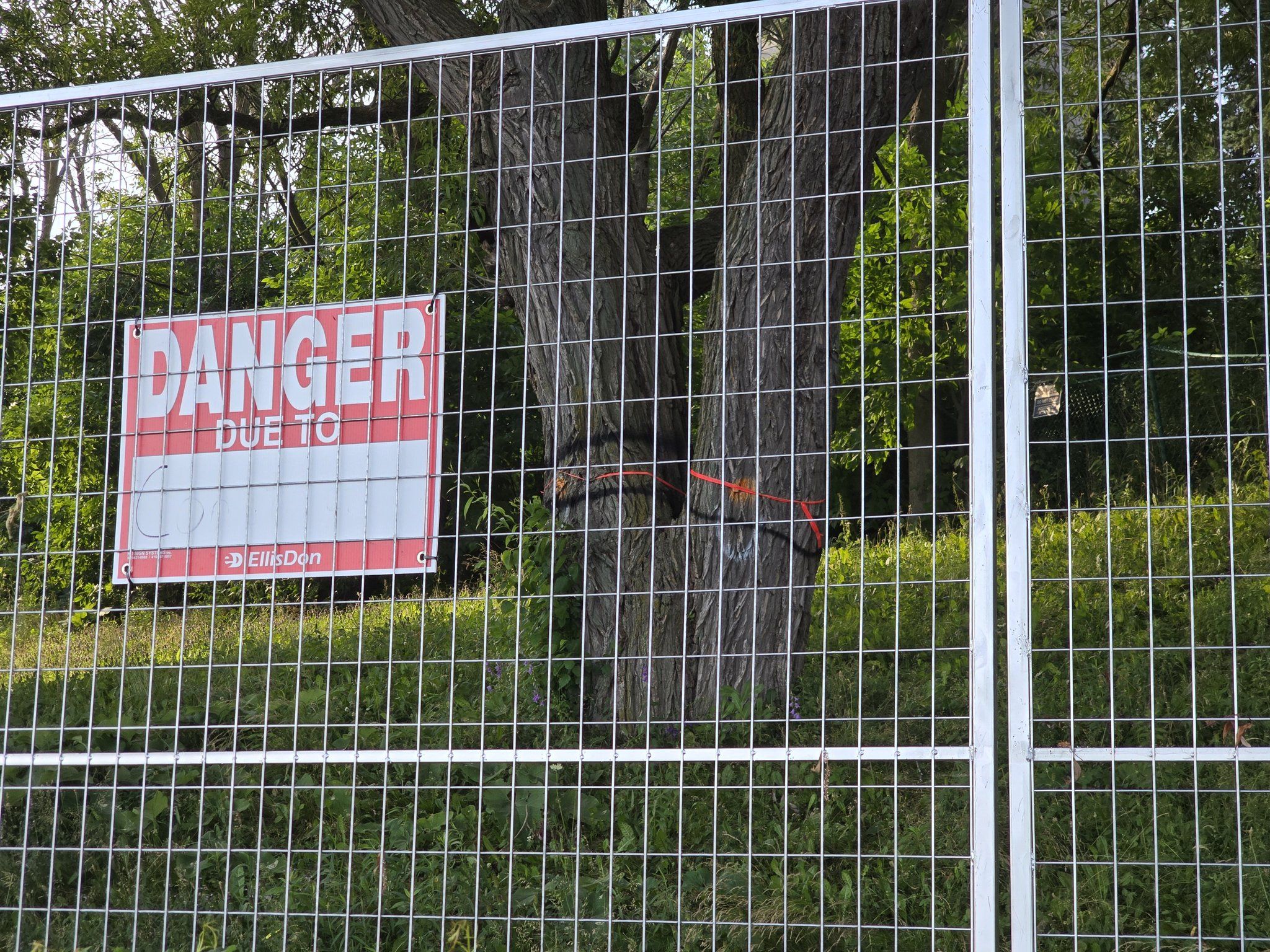
Proponents of the mega-spa project note that Ontario Place consists of artificial islands created in the late 1960s by dumping fill excavated for the tunnelling of the Bloor-Danforth subway (Line 2). They use this fact to justify dumping more fill into Lake Ontario. However, over the past 50 years the human-created shorelines at Ontario Place have naturalized, and the Toronto Region Conservation Authority created wetlands in the lagoons, providing habitat for fish, turtles, frogs, blue herons, and other shorebirds. Since the 1960s, the cumulative harmful effects of infilling lakeshores have become better understood by biologists. Dumping fill in freshwater lakes has long been recognized to harm water quality and fish habitat, and townships in Ontario cottage country now have strict bylaws making it illegal to cut trees near the shoreline, dump fill, or alter the natural shorelines of lakes and rivers. An additional concern is that three species of endangered fish have been recorded in the waters off Ontario Place — the American eel, shortnose cisco, and deepwater sculpin.
The Ford government amended the Conservation Authorities Act specifically to reduce the jurisdiction of conservation authorities to regulate the impact of development projects on watersheds, and the Rebuilding Ontario Place Act exempted the West Island of Ontario Place from an environmental impact assessment.
“The Ontario Place shoreline falls within Toronto Region Conservation Authority’s Toronto waterfront screening area, however this project is exempt from TRCA approvals under the Conservation Authorities Act,” said Paul Nowak, senior TRCA enforcement officer.
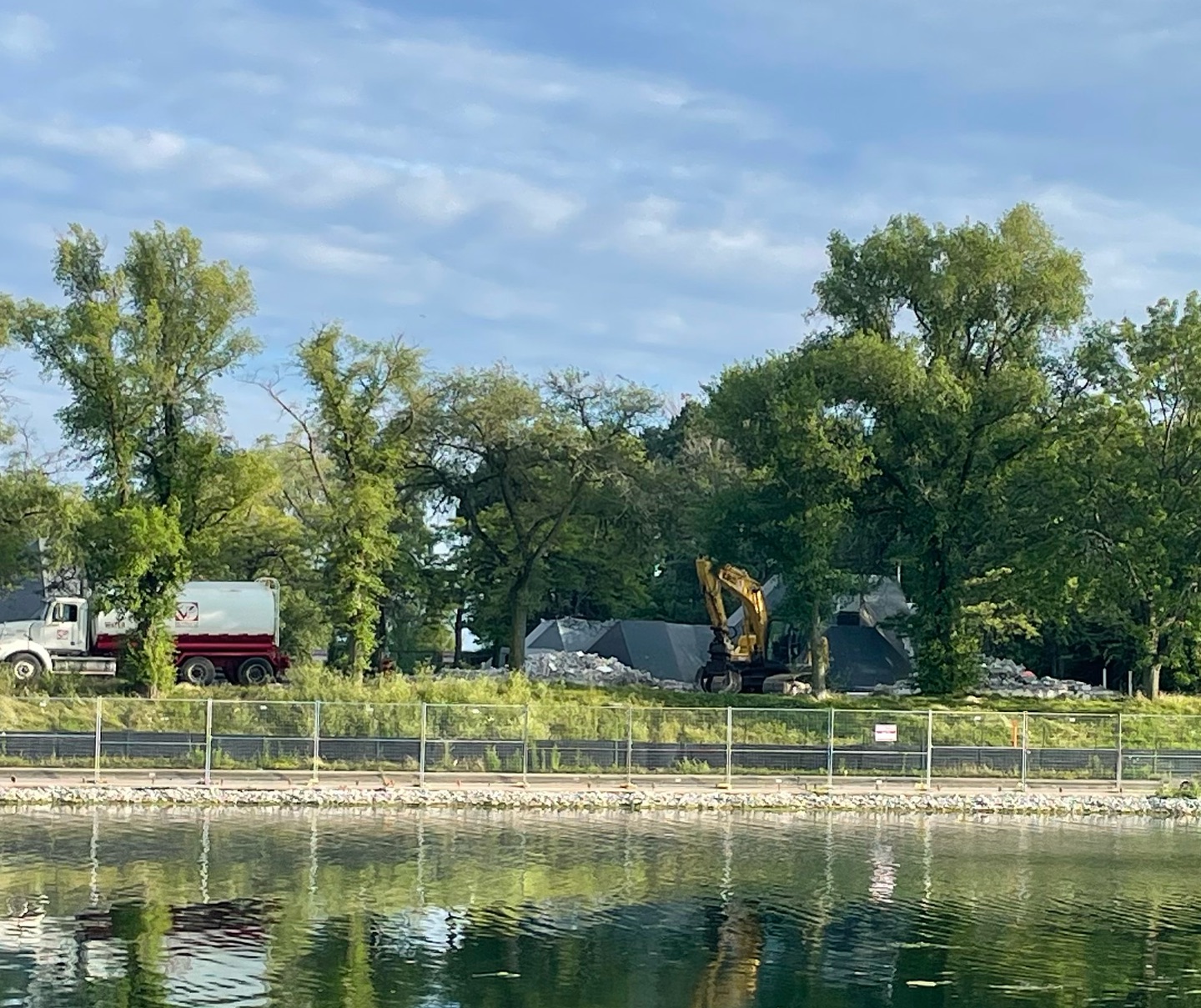
Up until Ontario Place Protectors decided to appeal its application for a judicial review of the Rebuilding Ontario Place Act, the future of the 850 trees and wildlife habitat for 15 species at risk on the West Island of Ontario Place looked bleak. In June 2024, the advocacy group Ontario Place for All lost its lawsuit to force the Ontario government to undertake an environmental impact assessment of its mega-spa project on the West Island. Ontario Place for All had launched its lawsuit in November 2023. In response, the Ford Government passed the Rebuilding Ontario Place Act in three days in December 2023, without public consultation or committee review. This is the act that exempts Ontario Place from the Ontario Planning Act, the Environmental Assessment Act, the Heritage Act, and City of Toronto noise bylaws.
Then, on July 26, 2024 Ontario Superior Court Justice Lisa Brownstone dismissed a request for a judicial review of the Rebuilding Ontario Place Act filed by Ontario Place Protectors. She ruled that the advocacy group had not demonstrated that its members would suffer damages from the destruction of the West Island, nor proven that it had standing before the court.
Justice Brownstone acknowledged widespread public opposition to the mega-spa project at Ontario Place, but agreed with the Ontario Government lawyer, Zachary Green, that the Rebuilding Ontario Place Act gives Kinga Surma, Minister of Infrastructure, authority “to do whatever she wants with the Ontario Place public parkland.”
“The remedy for the public’s disapproval of such laws lies at the ballot box,” wrote Justice Brownstone in her decision.
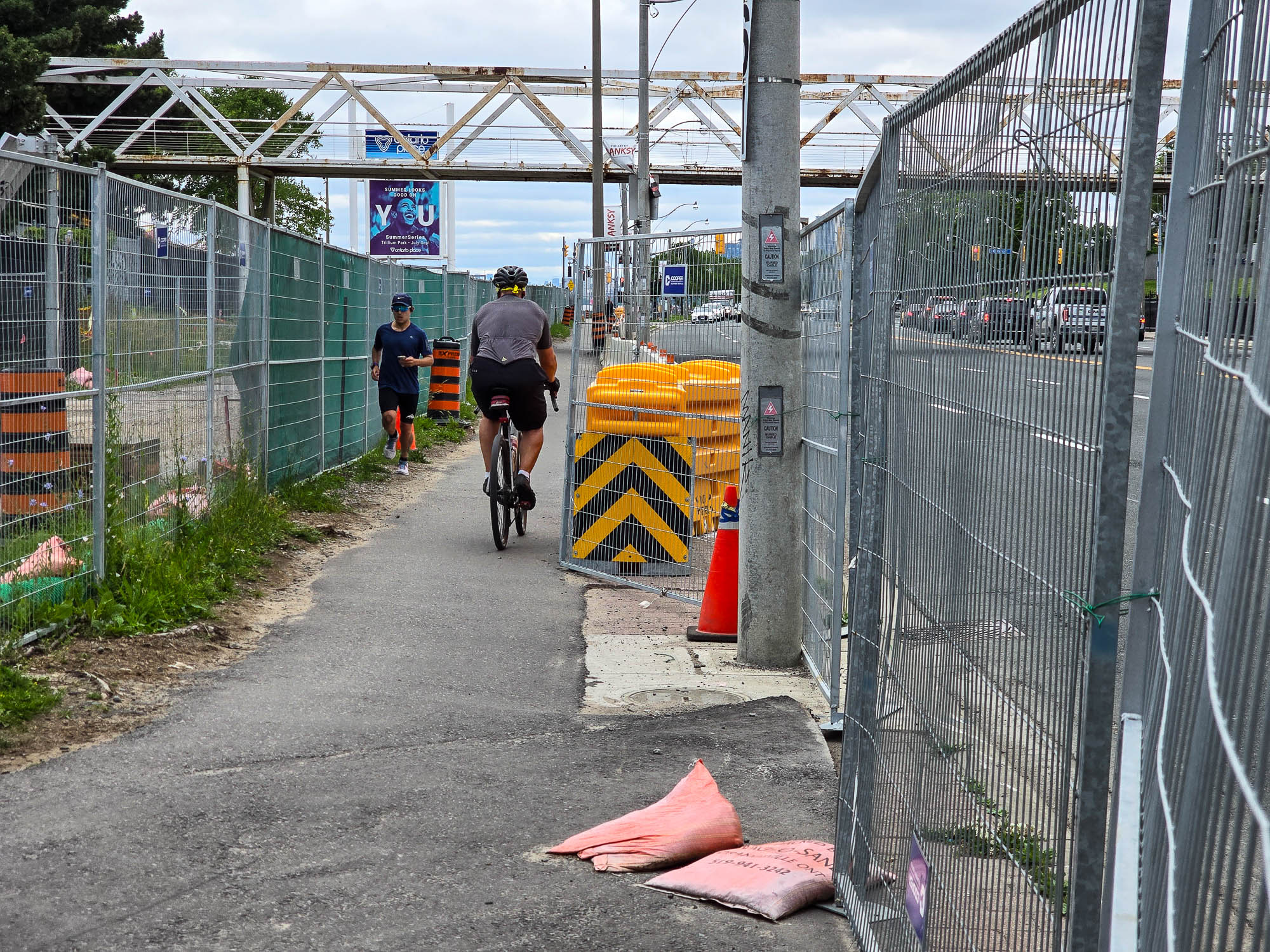
Eric K. Gillespie, Ontario Place Protectors’ lawyer, argued that Section 17 of the Rebuilding Ontario Place Act (ROPA) violates the Canadian Constitution Act by providing absolute immunity for cabinet ministers, public servants, and advisors from any lawsuits. “ROPA completely removes the ability of citizens to seek redress from the courts, and impinges on the jurisdiction of the Superior Court,” he said.
Gillespie said that if the Rebuilding Ontario Place Act is not struck down by the court, there is nothing to prevent a majority government at Queen’s Park from enacting legislation to enable it to build a nuclear waste storage facility anywhere in Ontario. Or to sign a 95-year lease with a private developer to build a hotel, condo, and casino complex in other public parks, such as Algonquin Park, Ontario’s oldest provincial park and a national historic site. All a premier would have to do is pass an “Enhancing Algonquin Provincial Park Act” modelled on the Rebuilding Ontario Place Act, and development in Algonquin Park would no longer be subject to an environmental impact assessment. And Algonquin Park would no longer be protected by its heritage status or its status as a public park.

The legal battle between the Ontario government and citizens’ groups over the future of Ontario Place is a David and Goliath fight. The Ontario government has staff lawyers and unlimited legal resources, whereas citizens’ groups like Ontario Place for All and Ontario Place Protectors have had to raise funds for legal expenses from the public. Ontario Place Protectors has spent $80,000 so far in legal costs, says Margie Zeidler, a volunteer director and daughter of Eberhard Zeidler, chief architect of Ontario Place who designed the Cinesphere and pods. So far Ontario Place Protectors has raised $30,000 from some 400 donors via a GoFundMe campaign. (Full disclosure: I am one of those donors and have also contributed to Ontario Place For All). Given the funding shortfall Ontario Place Protectors is facing, lawyer Eric K. Gillespie has offered to take on the appeal without a fee. However, Ontario Place Protectors would still be liable for court costs if it loses the appeal.
With the support of compliant ministers and MPPs, Ford has systematically eliminated all guard rails that protected environmentally sensitive watersheds and conservation lands. The Environmental Assessment Act, passed 34 years ago in 1990, was designed to protect Ontario’s environmentally sensitive habitat. But the Rebuilding Ontario Place Act retroactively exempted prime waterfront at Ontario Place from the very act designed to foster intelligent development that minimizes negative impacts on wildlife and their habitat. And the same act exempted Ontario Place from the Ontario Heritage Act, removing Ontario Place’s protection as a provincially designated heritage site.
The auditor general of Ontario is undertaking a value for money audit of Therme Group’s 95-year secret lease at Ontario Place. This may be taxpayers’ only chance to learn how much Therme is paying in rent for the West Island; and the terms of the lease if the demand for spa services at Ontario Place is not as high as Therme predicts and the business fails. Is Therme Group free to launch another business at Ontario Place, or do the land and buildings revert to the province? As with the Greenbelt controversy, it seems the auditor general is one of the few remaining checks on the power of the premier of Ontario. The auditor general’s office may only release its report in December 2024. By then it may be too late for the trees and wildlife that make their home on the West Island of Ontario Place.
Ian Darragh is a former editor-in-chief of Canadian Geographic magazine.





3 comments
West Island’s beach is not “the cleanest beach in Toronto”. It’s not even in the top 10. You guys need to fact-check your articles for basic accuracy.
Ian Darragh seems unaware of all the lake infill happening in the rest of Toronto right now. How does this compare to the Don’s rewilding, or Tommy Thompson Park? I don’t care so much about what cottage country is up to when it comes to urban development.
“The Ontario government has staff lawyers and unlimited legal resources…” In other words, they’re fighting us with our own money. The whole thing makes me heartsick, literally. I feel sick and helpless when I realize how a small cabal of power-hungry, anti-social politicians have been able to bully us all into submission. What are we supposed to do now? Torches and pitchforks? Might not be a bad idea. What a well-written article. What a heartbreaking story.
I know the author and the photographer and as a journalist myself I can guarantee this is a thoroughly-researched, fair and balanced, and accurate documentary. The Government scandal at Ontario Place is just one of Doug Ford et al’s attack on our natural commonwealth under the guise of affordable housing and economic growth. It’s not. Please add your voice to opposing these mega projects including Highway 413 across the Greenbelt.